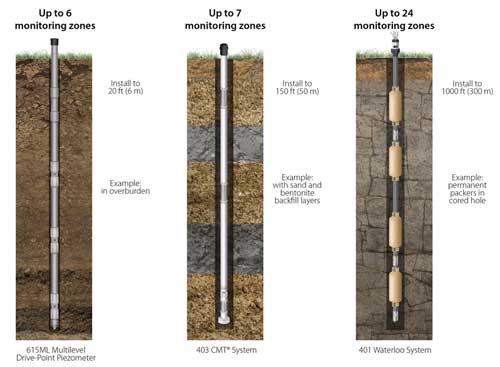The Importance of Multilevel Monitoring
Multilevel groundwater monitoring involves creating a series of discrete isolated intervals at various depths in a single borehole. This high-resolution subsurface profiling method has many advantages:
- Provides detailed subsurface data for accurate 3D site assessments, including horizontal and vertical contaminant concentrations and flow
- Short multilevel screens overcome issues created by long screens, which blend groundwater chemistry over the entire length
- Ambient flow between different zones in a well is avoided with properly isolated multilevels, preventing cross-contamination or flow outside the well
- Low cost compared to installing multiple boreholes and reduced site disturbance; less permits and time required on site
- Reduced field time due to smaller purge volumes, reduced disposal, efficient sampling and rapid response to pressure changes in small diameter monitoring tubes
- Improves remediation strategies by monitoring the thickness, concentration variations, movement and extent of a plume over time
Solinst Multilevel Groundwater Monitoring Systems
Since the early 1980s, Solinst has been working with experts in the hydrogeology field to develop groundwater monitoring systems, which provide the high-resolution subsurface data that accurate subsurface investigations demand. Solinst manufactures three different types of multilevel systems, each suited to different environments and applications.



